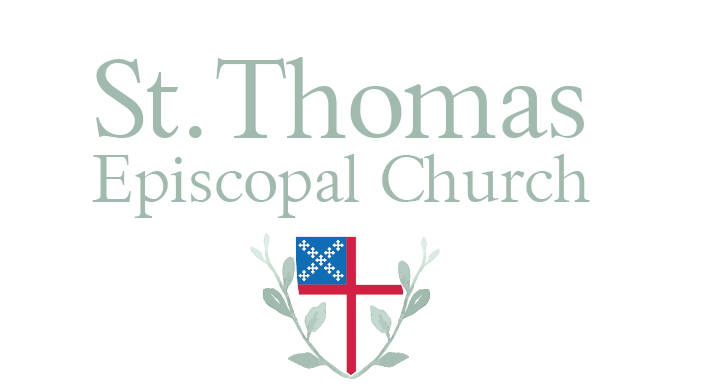Our Roots
St. Thomas Episcopal Church is a small church with a long history. When one talks about St. Thomas, the word “oldest” keeps appearing: It is the oldest operating church in Hunterdon County; among the oldest Episcopal church buildings in New Jersey; and the 12th oldest congregation in the state.
St. Thomas building has changed very little over more than two centuries and the area around it is still rural, almost completely surrounded by cornfields. The interior continues to delight visitors with its mixture of white walls and sparkling glass, with the natural beauty of the outdoors framed by the high arch of the altar window. A simple wooden cross and white spindles are the only adornments of the altar area.
The congregation was founded in 1723 and was served by missionaries sent at the behest of the Bishop of London. Rev. John Talbot was one of these men and through his letters to the Society of the Propagation of the Gospel in Foreign Parts we learned that the congregation was making preparations for the erection of a house of worship, a log structure. This “forest sanctuary” stood on the south side of the road, nearly opposite the present church and, it is presumed, it was not visited regularly by a minister for a number of years. Worship was conducted by a lay-reader and when practical the congregation was visited by area ministers. The first minister to assume the position of Vicar appears to have been the Rev. Andrew Morton.
The Rev. William Frazer succeeded Rev. Morton in 1768. The congregation at that time consisted of 30 families and the old log building was in a shattered condition. The decision was later made to erect a new church and the land was donated by Lewis Stevens, a member of the New Jersey family that later founded the Stevens Institute of Technology in Hoboken. The church’s stone foundation was laid in 1769 and it took the congregation three years of working on the structure in their spare time to complete the building.
During the American Revolution, the church closed. It reopened after the war in 1784 and became a part of the Episcopal Church of America when that denomination was formed in 1789. Rev. Frazer’s successor was Rev. George Woodruff who preached bi-weekly. Rev. Clarkson Dunn succeeded him. There was a period of several years early in the 19th century when regular services were entirely suspended because the membership had become small and the church and grounds were badly neglected.
In 1822 the church was thoroughly repaired and services were again resumed under the ministry of Rev. Douglas and a Sunday school commenced. Succeeding Rev. Douglas was Rev. Jaques followed by the Rev. William Crane in 1839. While he was rector at St. Thomas it was at his suggestion and through his influence that the stone wall was built along the churchyard front. Mr. James Dunham, a lay-reader, conducted services for several years. In 1845 Rev. James Adams took charge followed by Rev. Jaques then Rev. Forgus.
Religous services were suspended during the Civil War and again the church fell into disrepair. Although there is no written proof to corroborate the theory, a large beam is suspended between the side walls and a door-sized space above the rear window, now filled in with stone, suggests that a slave gallery entered by a ladder, may have been part of the original building. In 1875 the church was repaired once more with money donated by wealthy members under the direction of Hon. Frederick Potts of Pittstown and remained open until 1895. The only known activity at the church during the early 1900’s involved the St. Thomas Burial Society, a church organization which met annually to maintain the historic cemetery and clean the church.
In 1955 St. Thomas third restoration began by members of the Calvary Episcopal Church in Flemington. The guest register from the June 15, 1958 morning worship service – believed to be the first held at the church in decades – reports that about 40 people from Hunterdon County attended. Services were held there during summer months and on holidays throughout the year, although there was no electricity or heat in the building. (Electric lights were installed in 1960 and a heating system was installed in 1978).
In 1975 St. Thomas became an organized mission of the Diocese of New Jersey and was assigned a part-time vicar, Rev. Richard Townley. In 1976 the church building was designated a national historic site which made it difficult to perform any new construction or alter the building in any way.
The first vicar, Rev. Ann Holt, was appointed by Bishop Mellick Belshaw in 1982 to serve St. Thomas, which at that time had a membership of 21 families. A 12′ x 20′ annex and porta-john was added to the facility in 1986 and used until the fall of 1993 when construction began on a Parish Hall addition, completed in 1997 to house the church school, nursery, and to hold fellowship events.
After over 275 years as a mission St. Thomas became a parish in the Diocese of New Jersey in 1996. St. Thomas has grown from a pastoral to a family level church.


